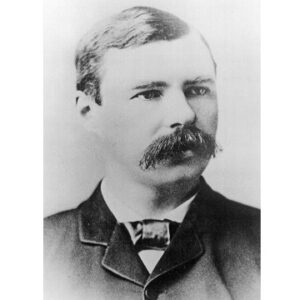Squire Whipple was an American civil engineer who was dubbed the ‘Father of American Iron Bridge Construction’. He was a unique craftsman who began observing the craft of construction during his youth. He was the son of a farmer and developed an early passion for construction and the materials used in its construction. Following graduation, he received training in canal and railroad construction and quickly rose to prominence as one of the greatest engineers of all time. He advocated for the use of iron as the primary material for bridge construction rather than wood in order to increase the bridge’s stability and strength. Through his determined efforts, he popularized the use of science in engineering and modernized the concept of bridge construction. His patents demonstrated his ability to design and materialize his concepts. His ingenuity continues to enlighten the world today, as one of the earliest iron bridges built on his patented design is still standing in America. He transformed civil engineering with his new breakthroughs in the field of bridge construction. He ushered in a new era for civil engineers, earning him the title of ‘Father of Iron Bridge Construction in America’.
Childhood & Adolescence
He was born in Hardwick, Massachusetts on September 16, 1804 to James Whipple, a farmer, and his wife Electa Johnson.
His father designed, built, and operated a cotton-spinning mill in nearby Greenwich, Massachusetts, and thus exposed him to construction and the materials used in it at a young age.
In 1817, his family relocated to Orsego County, New York, near Cooperstown, where he received the best available common school education.
Following high school, he attended New York’s Hartwick Academy and Fairfield Academy. He earned his bachelor’s degree in one year from Union College in Schenectady, New York.
Career of Squire
He began his career on the Baltimore and Ohio railroad in 1830 as a rodman and leveler. Additionally, he worked as an apprentice on several other canals and railroads. He also designed and built mathematical instruments during his apprenticeship, including transits, engineer’s levels, and drafting equipment.
In 1840, he designed and built a weigh lock on the Erie Canal in Utica for the purpose of weighing canal boats. He began his career as a bridge builder the following year by patenting his design for an iron-bridge truss.
He had an opportunity to demonstrate his construction and engineering abilities when the wooden bridge spanning the canal at First Street in Utica collapsed. He was hired by the canal commission to construct a bridge.
He proposed his idea of a stable bridge, an iron bridge, to the canal commissioners, but they appeared hesitant to proceed due to their uncertainty about the bridge’s stability and strength. He demonstrated the construction of a comparable iron bridge on his own dime and persuaded them to take on the task.
He then demonstrated his civil engineering abilities by constructing several bridges over the Erie Canal and the New York and Erie railroad near Newburgh and Binghamton over the next decade.
He constructed a wrought and cast iron bridge over the Albany and Northern railroad in 1852–53. He also constructed a 146-foot-long iron railroad bridge near Watervliet, New York.
He retired professionally in 1860 but continued to make significant contributions to civil engineering by designing lift and swing bridges.
He designed and patented America’s first vertical lift bridge in 1872. He constructed a bridge of this design over the Erie Canal in Utica in 1874.
Significant Works of Squire
In 1841, he constructed a weigh lock scale with a capacity of 300 tons, which was at the time the largest weighing device in the country for weighing canal boats.
In West Troy and Utica, New York, he built the first successful long span trapezoidal railroad bridges on New York Railroads.
One of his most notable literary works was ‘A Work on Bridge Building’, which he wrote and published in 1847. It consists of two essays, ‘The One Elementary and General’ and ‘Giving Original Plans and Practical Details for Iron and Wooden Bridges.
It conducted an accurate analysis of the stresses acting on bridge trusses and developed mathematical procedures to account for them that are still useful in bridge construction.
Between 1867 and 1869, Simon de Graff, a Syracuse builder, constructed the ‘Whipple Cast and Wrought Iron Bowstring Truss Bridge,’ also known as the Normanskill Farm Bridge.
His design was based on Whipple’s original bowstring truss design. It was added to the National Register of Historic Places in 1971 and is now one of the country’s oldest surviving iron bridges.
Awards and Accomplishments
He was the first man to be named an Honorary Member of the American Society of Civil Engineers following the Society’s resurrection in 1868.
Personal History and Legacies
Despite his marriage to W. Anna Case, he had no children. He died in Albany, New York on March 15, 1888, at the age of 84, and was buried in the Albany Rural Cemetery.
For his innovative ideas and contributions to civil engineering, he is regarded as the ‘Father of Iron Bridge Building in America.’
He is credited with being the first bridge builder to apply scientific principles to the field, thereby revolutionizing modern bridge construction concepts.
Estimated Net Worth
The estimated net worth of Square is $1-$5million.


